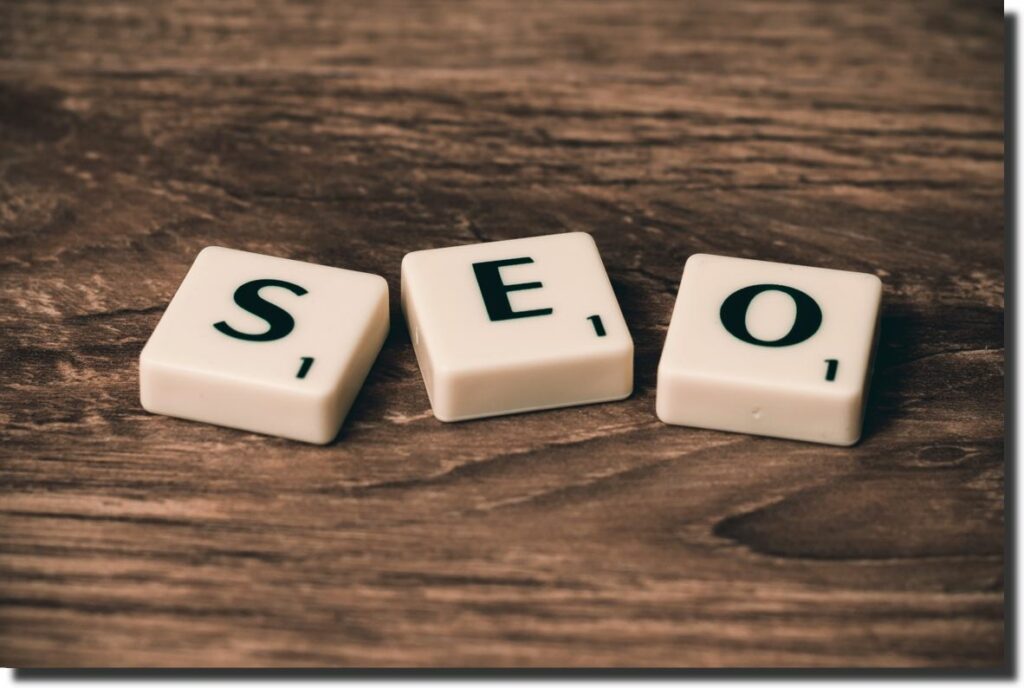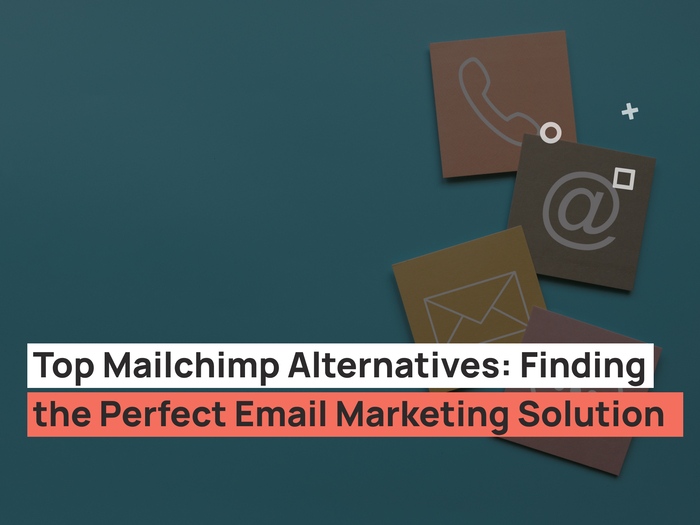One of the biggest challenges for today’s brands is creating demand for their products and services.
Demand generation aims to recognize potential customers based on their initial behavior and nurture them so that the sales team obtains high-quality and highly qualified leads.
Demand generation marketing takes time, even though it shares many similarities with lead generation. It encompasses a variety of touchpoints, campaigns, and content pieces – basically whatever your brand does to create buzz, awareness, and recognition.
So in this article, we’re learn all about demand generation marketing & the strategies you can leverage to excel. Let’s start!
What Is Demand Generation Marketing?
Most likely, you are familiar with demand generation marketing. But what is it precisely, and how can you utilize it to advertise your business and draw in more clients?
Demand is a concept that is derived from fundamental economic principles. Supply is the range of products and services you provide, whereas demand is the number of customers interested in buying your products.
Demand generation marketing aims to raise awareness and interest in your goods and services by conducting targeted marketing campaigns. In other terms, it is the process of generating interest in your product or service. Additionally, demand generation marketing attempts to attract top-quality leads who will interact with your business and ultimately make a purchase.
Demand generation marketing entails a multi-step procedure that involves determining the potential issues clients face, becoming familiar with your brand as a potential solution, and highlighting the benefits of working with your company.
What Is Demand Generation In Simple Words?
When an organization uses marketing to raise awareness and interest in its goods and services, this is known as demand generation.
Demand creation, frequently employed in longer business-to-consumer or business-to-government sales cycles, involves several marketing disciplines and is the union of marketing initiatives with a disciplined sales process.
Creating awareness of your goods, positioning relevance, assisting validation, and minimizing client evaluation are just a few of the demand-generating components.
The Importance of Demand Generation Marketing
As long as you have the supply to maintain it, the more demand you create for your company, the more money you’ll make and how much faster it will grow.
Programs for demand generation can assist you in increasing consumer interest, reaching new markets, and re-engaging existing clients. Demand generation marketing is also excellent for increasing revenue because it lowers customer acquisition costs and increases ROI.
However, it’s crucial to limit how much promotion you do to what you can handle. If scarcity is due to excessive demand, you won’t have enough inventory or workers to serve every consumer.

On the other side, an excessive supply leads to a surplus and can result in excess of either product or labor hours. If you have too many products on the shelf or too many paid employees who are idle, you will lose money.
No business likes to do this; therefore, modifying your demand generation strategies and expanding your company with minimal possible growing pains is critical.
Demand Generation Marketing Vs Lead Generation
Demand generation and lead generation are frequently grouped. But it’s crucial to remember that these are separate initiatives.
Lead generation aims to entice prospective buyers to submit the information that will help you guide them through the sales process and persuade them to make a purchase. You could, for instance, write an ebook or a guide and ask people to enter their email addresses to access it.
| Demand Generation | Lead Generation |
| Increase brand awareness. | Collect contact information |
| Educate your audience using content | Generate a database of leads |
| Generate interest by highlighting a problem | Demonstrate the value of your offer |
| Create a need by eliminating alternatives | Convert leads into customers |
After that, you can send them follow-up emails with relevant, helpful material that motivates them to find out more about your company and make a purchase.
Demand generation is focused on informing your target market by showcasing how your products or services may address their issues.
For instance, you might write an article on a well-known industry website to introduce readers to your business and raise brand awareness.
Demand generation is more top-of-funnel than lead generation, which motivates potential consumers to take some action because it tries to inform people about your company.

What Are the Best Demand Generation Strategies?
Are you looking for some creative approaches to increase demand for your products and services?
Let’s look at 10 demand generation strategies that might increase customer acquisition and revenue for your company.
Produce High-quality Content
Content establishes you as an authority in your field and offers your audience a useful tool for learning more about your company.
Success in content marketing, however, takes consistent effort. If you already regularly publish material, consider how you may enhance its value.
Compared to your competition, why would someone choose to read your content?
You can keep your material interesting and position yourself for long-term success by including unique data and research and giving a current perspective on the newest trends.
You may also make how-to videos to help people use your goods and services to address their problems. You don’t need a lot of expensive equipment or a cast of professional actors if you want to make and use videos as part of your demand generation plan.
Instead, you may quickly create and post videos on YouTube, your website, and your blog using the resources available.
You can increase demand and encourage people to learn more about your products and services.
Providing Free Resources
Providing helpful resources like tools, apps, and downloads can assist build trust between your audience and your company. Additionally, readers who find your information useful are more likely to visit your website again and finally buy products.
Positive customer experiences also increase the likelihood that they will promote your brand and recommend it to friends and family.
Positive customer experiences also increase the likelihood that they will promote your brand and recommend it to friends and family.
Offering relevant resources also increases the likelihood that prospective clients will provide you with the data you require to classify them as a lead, including their name, email, and other contact information.
Employ Lookalike Audiences on Facebook
Facebook provides various sophisticated targeting solutions to assist you in reaching your target market and boosting demand for the goods and services you provide.

Based on demographic and behavioral similarities, lookalike audiences on Facebook are personalized audiences that resemble individuals who have already demonstrated interest in your goods, services, or content.
By using the extensive user data that Facebook has collected, lookalike audiences enable you to increase the reach of your Facebook advertising campaigns.
You can upload custom audiences using your collected user data to make lookalike audiences with many of the same traits. You can use lookalikes to cast a wider net by uploading a larger custom audience.
Partner with Industry Influencers
By collaborating with influencers in your industry, your company can gain immediate access to its audience. Influencer marketing can be a terrific Demand Generation Marketing strategy to increase brand recognition and create demand for your goods and services when you choose the proper partners.

Consumers frequently trust peer recommendations over brand promotions, which makes influencer marketing effective. Additionally, 40% of individuals have made an online purchase after watching an influencer on social media use it.
Influencer marketing can also assist your company in creating beneficial relationships and enhancing your stature as an expert in your field.
Additionally, you can offer webinars in collaboration with influencers on topics that appeal to your target audience.
To avoid losing any of your present consumers to a rival, pick one with a comparable but distinct target market if you decide to partner with another business.
By collaborating with influencers, you may reach their current audience, build brand recognition, and inform more people about your brand.
Evaluate Managed Placements
Managed placements in display advertising are another option.
Advertisers can limit their reach to people who are more likely to respond favorably to their advertising by using managed placements, which give them control over the audience to which their ads are presented.
To put it another way, they use a more focused strategy to display, which your company may use to raise brand recognition and create more demand.
Managed placements can assist you in educating your target audience and boosting demand for your products if you want to save money by avoiding spending it trying to reach people who aren’t interested in your products and services.
Make Use of Remarketing Displays
Did you know that 28% of people will leave shopping carts in online stores empty?
You can use display remarketing to remind visitors about the goods and services they’ve already looked at on your website.
As a result, it aids in traffic retention and conversion rather than just drawing in new visitors to your website who leave without taking any further action. This is a fantastic approach to maintain customer interest in your company and create demand for your goods and services.
Email Marketing
Email is yet another effective demand generation tool that enables you to communicate with potential clients, give them useful information about your company, and even supply them with exclusive specials and discounts.
You should refrain from continuously blasting your email lists, though. Send your subscribers only the tools, materials, and deals that could be useful to them. Doing this may win over more of your present and prospective consumers’ confidence and loyalty.
You can also conduct A/B testing on various components, such as subject lines and calls to action (CTAs), to achieve the best results from your email campaigns.
Use Lead Scoring
Lead scoring analyses how your prospects behave and what they do when they interact with your brand.
This might assist you in deciding whether specific prospects show enough interest to qualify as leads.
Additionally, you can look into particular activities made throughout various brand interactions. Did they view a page on your website that suggests buying intent?
Did they request a product demonstration or make use of your free tools? You can tell where they are in the sales funnel and whether they have a chance of becoming a customer by using the responses to these questions.
By evaluating a lead’s position within an organization concerning their authority over decision-making and level of seniority within a company, lead scoring can also assist you in determining the strength of a lead.
Marketing via Social Networking
Social networks influence the choices and purchases of potential customers.
This might assist you in deciding whether specific prospects show enough interest to qualify as leads.
Additionally, keeping an active presence on popular social media sites like Facebook, Twitter, LinkedIn, and Instagram can aid in creating conversations with customers and encouraging them to learn more about your company.
Social media is a terrific method to connect with potential consumers and provide your audience with a behind-the-scenes look at your company. Social media may also inform your audience about the products and services you provide and nudge them into contacting you for further information.
Social media also allows you to learn a lot about your target audience.
Using this knowledge, you can tailor your message to meet their needs and interests better.
Assess and Optimize
Finally, it’s critical to assess your demand generation marketing activities to identify what’s working effectively and areas where you can make changes to improve results.
A smart place to begin is by installing Google Analytics on your website and setting unique goals.
Consider statistics like conversion rates, acquisition, and lead costs. Then, you may determine what is effective for your company and eliminate tactics that aren’t producing outcomes.
What are Examples of Demand Generation?
The Moz bar is among the top instances of demand generation and will be well-known to all digital marketers.

The Moz bar is among the top instances of demand generation and will be well-known to all digital marketers. Before Moz, many marketers had little interest in SEO. They wanted to rank higher, sure, but they had no idea what would work or how to do it. Big businesses could therefore afford SEO consultants, while small SMEs could just add a few links and hope for the best.
But Moz made a big difference. They developed a premium package that offered SMEs a lot of SEO information. However, many SMEs were unsure of why they could need that SEO information. They began understanding SEO by developing a free tool that showed them how links worked.
Moz could only generate demand for their product where none previously existed by developing a free tool that got customers started with SEO and showed them how links from pages with high domain authorities were essential to ranking.
Set up a Webinar
One of the best demand generation marketing examples of demand generation is webinars. These videos are typically gated, requiring an email account to reserve a space or access the content later. They are frequently used to increase product demand.
Webinars can include product how-tos or Q&As on your target audience’s problems. Both formats are effective as long as readers gain new knowledge and the information is simple to adapt for use across various platforms and campaigns.
Added advice? Partner with a satisfied customer to learn more about how they use your product, or co-host an event with a relevant business to gain access to their marketing database
Shopify
Shopify turns anonymous blog readers into leads by using webinars. Its clever yet successful method constantly promotes a webinar, starting within minutes in the sidebar of its blog.
When there is a countdown clock, individuals feel pressured to join immediately or risk missing out.
A Shopify Demand Generation Example
The key is that the webinar isn’t happening right now, so when the timer reaches zero, it automatically restarts to 15 minutes.
The substance of the video is never stale because it addresses a general problem that many e-commerce business owners face.
It would be simple to a group and deliver more dropshipping-related information to leads after they have collected webinar leads to nurture them toward conversion further.
What is a Demand Generation Campaign?
A data-driven Demand Generation marketing strategy businesses use to raise awareness and interest in their goods or services is called a “demand generation campaign.”
It concentrates on providing discussions and material throughout the client’s journey. Your demand generation campaign needs to consider every touchpoint.
How to Design a Successful Demand Generation Campaign?
Your successful demand generation campaign’s goal should be to close the revenue gap between sales.
Drive prospects into your lead generation funnel to do this.
When creating your demand generation campaign, you should concentrate on a number of different components. This includes determining:
- Your ideal prospects;
- Their pain points;
- Common questions they ask;
- Their buying behaviors.

With this knowledge, you’ll be able to help your audience more effectively by understanding their needs. You will be able to formulate a plan that:
- Increases awareness;
- Sparks interest;
- Provides consideration;
- Fulfills the goal;
- Acknowledges evaluation;
- Lead conversions.
The steps below can be used to do so:
- Setting goals: is essential since, without them, you won’t be able to evaluate your success.
- Decide your target audience: Knowing your audience is essential if you want to create messaging that has an impact.
- Create a demand for your product or service: It’s up to you to raise awareness of certain problems because your audience isn’t aware of them.
- Create informative material: Your audience wants to know how to fix their problem now that they are aware of it; your content will explain how.
- Start a conversation: Gaining information from your audience by getting them to discuss their problems and what they’re doing to fix them. Additionally, it makes it possible for you to establish a credible social media presence.
- Develop lead magnets: This is where demand generation campaigns are supposed to end. After creating demand, lead generation campaigns should now take over.
- Measure success: by the appropriate metrics, which will reveal whether or not your campaign is effective. Views, remarks, likes, shares, and lead conversions are metrics to pay attention to (forms filled out).
Your demand generation campaign should be entirely data-driven. Measure everything, then utilize the results to make each step better.
Define KPIs
You need to know what to look for before accurately gauging your efforts. You must first specify your target key performance indicators if you want to monitor the effectiveness of your efforts. The KPIs you select should always be consistent with your overall commercial or marketing objectives.
Here are a few KPIs that may be relevant to your demand generation campaigns:
- Website Visitors;
- Downloads of lead magnets;
- Price per lead;
- Joining a free trial or tool;
- Cost of acquiring new clients.
You may then link your efforts at demand generation to actual business growth.
You can map the KPIs across your customer journey once you’ve decided which ones relate to your business goals. This will enable you to determine which investments are producing the greatest returns.
Key Takeaway
Demand generation is one of the largest obstacles for new businesses, especially startups and other enterprises operating in crowded markets. Demand generation is significantly more involved than lead generation, which makes it more difficult for new brands to master.
Today’s demand generation marketing goes beyond only generating demand for purchases. Demand generation does not involve pressuring customers to acquire products they do not require. It involves giving the appropriate information to the relevant individuals at the right time so that what you share is the optimal fit for the demands of your ideal customers.



